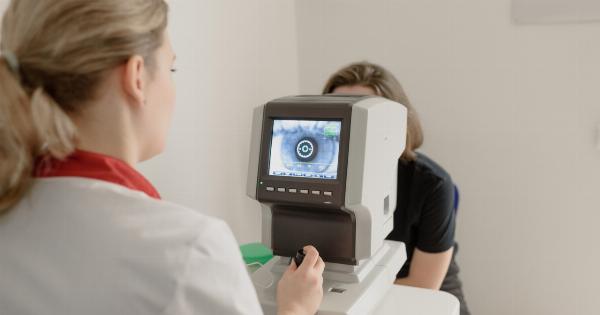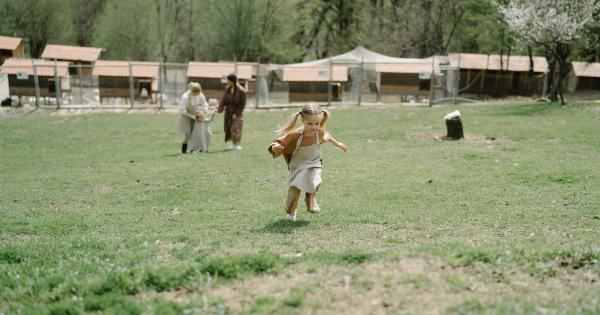Childhood myopia, commonly known as nearsightedness, is a growing concern among parents, healthcare providers, and researchers.
According to the World Health Organization (WHO), about one in three people worldwide suffers from myopia, and this number is expected to increase to half of the world’s population by 2050. Moreover, childhood myopia is becoming more prevalent, severe, and younger in age, leading to several complications such as cataracts, glaucoma, and retinal detachment later in life.
Causes of Childhood Myopia
The causes of childhood myopia are not entirely clear, but several factors may contribute to its development. Genetics play a vital role, as children whose parents have myopia have a higher risk of developing the condition.
Environmental factors such as spending more time indoors, less exposure to sunlight, and excessive near-vision tasks like reading, writing, watching TV, or playing video games may also increase the risk of myopia. Additionally, some studies have suggested a link between myopia and poor nutrition, lack of sleep, and inadequate physical activity.
Traditional Methods to Correct Myopia
The traditional methods to correct myopia include wearing glasses and contact lenses. Glasses work by refracting light onto the retina to compensate for the eyeball’s elongation in myopia.
Contact lenses work similarly by fitting over the cornea, but they provide a more natural vision and a wider field of view than glasses. However, children may find glasses and contact lenses inconvenient, uncomfortable, or unattractive, leading to non-compliance, social stigma, peer pressure, and reduced self-esteem.
Moreover, these methods do not address the underlying causes of myopia and may worsen the condition over time.
The Revolutionary Lenses for Myopia Control
A new solution that has emerged in recent years is the revolutionary lenses for myopia control. These lenses are specialized to slow down the progression of myopia in children, particularly those with high or rapidly increasing degrees.
They work by slowing down the elongation of the eyeball, which is the primary cause of myopia, by creating a peripheral defocus to encourage the eyes to grow in the right direction.
The Different Types of Revolutionary Lenses
There are different types of revolutionary lenses available in the market, and each has its unique design and mechanism of action.
Orthokeratology Lenses
Orthokeratology (Ortho-K or corneal reshaping) lenses are contact lenses worn overnight to reshape the cornea temporarily.
They create a flatter central and steeper peripheral corneal curvature, which results in peripheral defocus, thereby slowing down the eyeball growth. The effect of Ortho-K lenses lasts for one to three days, after which the cornea gradually returns to its natural shape. Studies have shown that Ortho-K lenses can reduce the progression of myopia by up to 50% in children.
Multifocal Lenses
Multifocal lenses are soft contact lenses that have different powers in different zones. They provide clear vision at all distances, including near and far, and create a peripheral defocus that reduces the stimulus for the eyes to elongate.
They are available in daily or monthly disposable options and have been shown to reduce the progression of myopia by up to 59% in children.
Customized Single Vision Lenses
Customized single vision lenses are similar to traditional glasses and contact lenses, but they have a unique design tailored to each individual’s eye shape, refractive error, and visual needs.
They use wavefront technology to map the eye’s aberrations and correct them precisely, creating a sharper image and reducing the peripheral blur that can stimulate myopic progression. Customized lenses may be more effective than traditional lenses in reducing the progression of myopia, particularly in children with high degrees of myopia.
Advantages of Revolutionary Lenses
The revolutionary lenses for myopia control offer several advantages over traditional methods, including:.
Effective in Slowing Down Myopia Progression
The revolutionary lenses have been clinically proven to slow down the progression of myopia, particularly in children with high or rapidly increasing degrees.
They offer a proactive approach to managing myopia and reducing the risk of future complications.
Safe and Comfortable to Wear
The revolutionary lenses are safe and comfortable to wear, with no significant adverse effects reported. They do not alter the eye’s structure or function and do not cause any discomfort or inconvenience to the child.
Convenience and Compliance
The revolutionary lenses offer a more convenient and compliant option than glasses and contact lenses. Children do not need to wear them during the day and can still enjoy the activities they love without restrictions or social stigma.
Moreover, the lenses require minimal maintenance and can last for several months to a year, reducing the cost and hassle of frequent replacements.
Improved Visual Quality
The revolutionary lenses offer improved visual quality, particularly in low-light and glare conditions, compared to traditional lenses.
They provide a wider field of view and reduce peripheral distortions, thereby enhancing the child’s visual performance and comfort.
Conclusion
The revolutionary lenses for myopia control offer a promising solution to combat the growing concern of childhood myopia. They are safe, effective, convenient, and offer improved visual quality, thereby enhancing the child’s overall well-being.
Parents and healthcare providers should consider this option as part of the proactive management of myopia and reducing the risk of future complications.






























